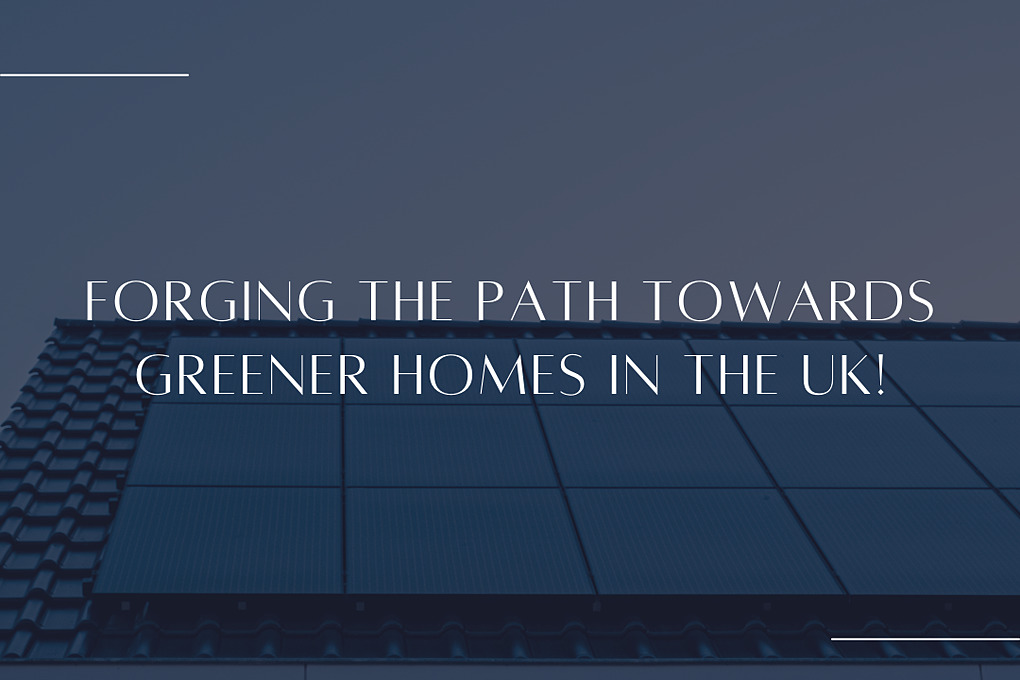Forging the Path Towards Greener Homes in the UK

- Aug 10th 2023
As the world becomes increasingly aware of the urgency to combat climate change, the question of whether homes in the UK are going green has gained significant traction. Amidst this growing concern, one key aspect remains at the forefront – the need for substantial incentives to encourage homeowners and landlords to embrace energy-efficient upgrades.
The Drive for Energy Efficiency: A Dual Benefit
Undoubtedly, the prospect of saving money on energy bills serves as a powerful motivator for homeowners to embark on green home improvements. In fact, an impressive 78% of homeowners highlight reduced energy costs as a driving force for adopting eco-friendly measures. Furthermore, the impact of escalating energy bills is evident in the choices of first-time buyers and tenants, with one in five expressing a strong preference for energy-efficient properties.
However, the scenario is not without its complexities. For landlords, the cost burden often outweighs the desire for energy efficiency, leading two in five to contemplate selling properties rather than making improvements. The challenge lies not only in the expense of retrofitting but also in deciphering the most impactful changes and navigating the initial steps.
The Current Landscape: Seeking Comprehensive Solutions
Presently, energy-saving enhancements remain a costly endeavour for many. Homeowners encounter barriers, not only in terms of upfront expenses but also in the lack of clear pathways to initiate the process. Seths advocates for more substantial incentives that would encourage homeowners and landlords to embrace energy-efficient practices and, in turn, reduce their operational costs.
The Path to Greener Homes: Overcoming Hurdles
The UK government has set a commendable target – achieving an Energy Performance Certificate (EPC) rating of C for as many homes as possible by 2035. However, the data tells a tale of a different reality. Currently, an average of 60% of homes listed for sale and 50% of available rental properties have an EPC rating of D or lower.
While the pace of EPC improvements is commendable, a significant gap remains. At the current rate, it would take over four decades for all properties listed for sale and over three decades for rental properties to achieve a desirable EPC rating.
Incentives: The Catalyst for Change
Emphasising the critical role of incentives in driving demand for greener homes. The report suggests potential areas for incentive implementation:
- Stamp duty rebates for new buyers investing in green improvements shortly after purchase.
- Robust incentives for energy-efficient homes, both for new mortgages and remortgages.
- Grants or tax benefits for integrating green technology like electric car charging points and solar panels.
- Fostering innovations that accelerate the development and adoption of energy-efficient solutions.
However, while the path to greener homes is promising, challenges persist. The lack of suppliers and affordable options hinders the widespread adoption of green measures. Affordability remains a significant hurdle unless incentives are substantial enough to drive transformation.
Looking Ahead: A Green Future
As the demand for greener homes gains momentum, the role of incentives and education becomes pivotal. By empowering individuals with knowledge about the benefits of energy-efficient upgrades and providing compelling incentives, the journey towards a sustainable housing landscape gains impetus. While hurdles persist, the report signals that progress is indeed underway.
As the world seeks to harmonise ecological responsibility with modern living, Seths stands ready to guide homeowners and landlords towards greener choices. Together, we can transform homes, enhance energy efficiency, and contribute to a more sustainable future.








